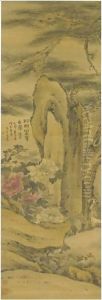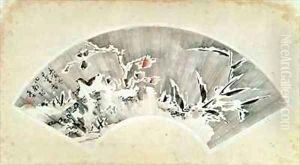Fenghan Gao Paintings
Gao Fenghan was a Chinese painter, poet, and calligrapher during the Qing Dynasty. Born in 1683 in Shandong province, Gao was also known by his courtesy name, Shiqi, and his art name, Dayuezhi. He was part of the Eight Eccentrics of Yangzhou, a group of artists who were known for their unconventional and highly individualistic styles at a time when many artists followed more traditional and conservative approaches.
Gao Fenghan started his career following the orthodox styles of the Ming Dynasty painters. However, after suffering from a disease that led to the atrophy of his right arm, he learned to paint with his left hand. This physical challenge forced him to develop a unique brushwork style characterized by boldness and an expressive, free-form quality that broke away from the meticulous techniques that were popular during his time.
In addition to his painting, Gao Fenghan was also known for his poetry and calligraphy, which were both held in high regard. His artworks often included poems inscribed on them, creating a fusion of visual art and literature that was appreciated by his contemporaries and has been studied by later generations. Gao's work is typically categorized as part of the individualist branch of Chinese painting, which emphasized personal expression over adherence to formal styles and techniques.
Despite his physical limitations, Gao Fenghan's artistic achievements were significant, and he maintained an active career until his death in 1749. Today, his paintings are considered important examples of the innovative spirit of the Qing Dynasty’s literati painters. His works are preserved in several museums and collections around the world, serving as a testament to his ability to overcome adversity and his contribution to Chinese art history.

